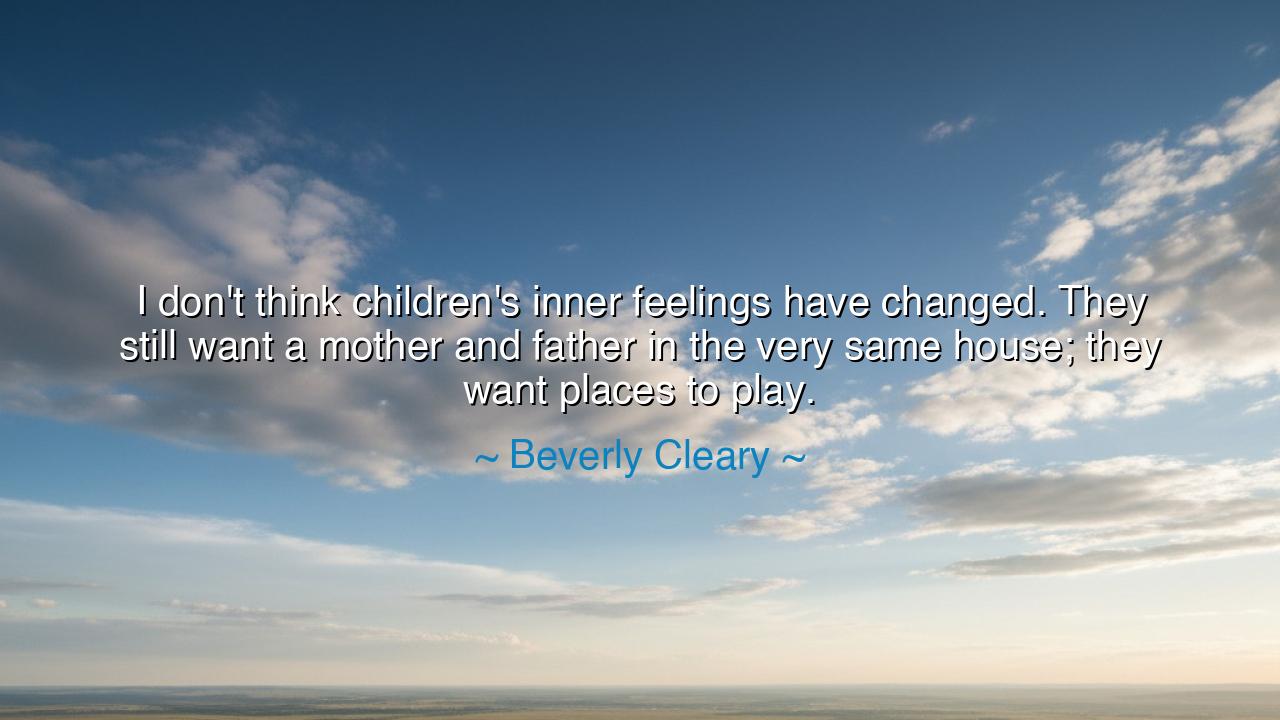
I don't think children's inner feelings have changed. They still
I don't think children's inner feelings have changed. They still want a mother and father in the very same house; they want places to play.






Beverly Cleary, the beloved storyteller of children’s worlds, once declared with quiet certainty: “I don’t think children’s inner feelings have changed. They still want a mother and father in the very same house; they want places to play.” In this gentle truth lies both a reminder and a warning. For while the world evolves in its machines, technologies, and shifting values, the heart of a child remains steadfast. The needs of the young are not for glamour, nor for abundance of possessions, but for presence, stability, and the freedom of joyful play.
The essence of Cleary’s wisdom is this: children’s inner feelings are timeless. While adults chase novelty, children’s needs remain constant. They long for love that does not fracture, for a home that does not divide, for the laughter that arises in spaces where they can explore, imagine, and be free. These are not luxuries but the foundations of human growth. Cleary, who spent her life listening to the voices of children through story, reminds us that beneath every era’s change, the child’s heart beats with the same eternal desires.
History bears witness to this truth. In ancient Athens, though philosophy and empire flourished, children still played in courtyards, still sought the presence of father and mother, still found joy in simple games with stones and sticks. In every century since, whether in castles or cottages, the pattern has repeated: though the outer world shifts, the child’s inner longing for family unity and places of play remains unchanged. Cleary’s insight cuts through illusion—it is not progress that most nourishes the young, but love and belonging.
Her words also shine a light on the pain of broken homes. When the unity of father and mother collapses, the child feels not ideology but absence. It is not the sophistication of modern life that heals such absence, but the attention of adults who remember that children crave stability more than indulgence. Likewise, when cities grow crowded and children lose their places to play, their spirits hunger for the fields, the sidewalks, the open air that allow them to stretch both body and imagination. Denied these, their joy withers.
Yet Cleary does not speak to condemn, but to remind. The cry of children is not complicated—it is simple, and therein lies its power. Adults too often ignore the simplicity of these feelings, imagining that gadgets or luxuries will suffice. But the wisdom of Cleary’s words teaches us to return to what is most elemental: love present under one roof, and the gift of play under the open sky. To honor these is to nurture children in the way that generations before us have always known.
The lesson is clear for parents, communities, and leaders: if you would care for children, give them not only food and education, but presence and space. Strengthen homes rather than weaken them, preserve places where children can run, climb, and imagine, and never forget that a child’s joy is born not of complexity but of the simplest foundations. These are not nostalgic yearnings but enduring truths, written in the heart of humanity itself.
Therefore, let Beverly Cleary’s words endure as a teaching across ages: that the inner feelings of children are a compass pointing us back to what truly matters. Do not be deceived by the noise of changing times—children need what they have always needed: love united, homes whole, and freedom to play. If we honor this wisdom, we raise not only happier children, but stronger generations who will carry love and stability forward into the future.






AAdministratorAdministrator
Welcome, honored guests. Please leave a comment, we will respond soon